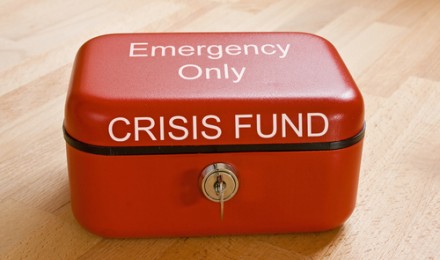In an environment of what seems a perpetually low interest rates, what is an investor looking for income to do?
A recent cover story in Barron’s Magazine “How to Get Safe Annual Payouts of 7%” illuminates some of today’s challenges in the fixed income investment world and offers that “Yields of 5% and 7% are attainable, but you have to look globally and across asset classes that may seem unfamiliar, such as emerging-market bonds, global infrastructure stocks, master limited partnerships and mortgage real-estate investment trusts.”
To be sure the author adds that while “some risks are obvious…more often risk is difficult to spot.”
After more than twenty years in the finance and investment arena, I feel compelled to add: Caveat Emptor.
I am continually amazed at the number of investors who only ask one question when it comes to potential fixed income investment selections: What is the yield? What I am even more amazed at is the response if the yield does not meet an investor’s perceived needs.
Worse still, many fixed income investment proponents are over allocated to just one or a few holdings, as they have been taught to avoid bond mutual funds.
Income investors need to keep the perspective that for every $100,000 invested a full percentage point yields an extra $1,000 per year. On a monthly basis that works out to $83 a month.
While I have no way of quantifying it, I would venture to say that an exponentially greater amount of money has been lost than gained when reaching for incremental amounts of yield.
For some recent examples just Google the following: Ultra short bond funds, Auction Rate Preferred Securities and the First Reserve Money Market Fund.
Even more horrifying is that these disasters occurred when investors/money managers were reaching for maybe an extra 25 basis points of yield. So for every $100,000 the extra risk (which proved ruinous) brought in about $20 a month.
Income investors should ask themselves the same thing all investors should ask. What is the potential total return in relation to the risk?
For investors who have to have the income to pay the bills, it may be better to drawdown a small portion of principal than to risk a bigger chunk of it in hopes of higher yield.
Absent the stomach to drawdown some principal, the fixed income investor needs to be sure that he or she is utilizing a prudent allocation to higher yield (and risk) investments.
This may require the use of a bond fund, but as I discussed in “Bond Ladders vs. Funds,” here it just might be the best option.
In an environment of what seems a perpetually low interest rates, what is an investor looking for income to do?
A recent cover story in Barron’s Magazine “How to Get Safe Annual Payouts of 7%” illuminates some of today’s challenges in the fixed income investment world and offers that “Yields of 5% and 7% are attainable, but you have to look globally and across asset classes that may seem unfamiliar, such as emerging-market bonds, global infrastructure stocks, master limited partnerships and mortgage real-estate investment trusts.”
To be sure the author adds that while “some risks are obvious…more often risk is difficult to spot.”
After more than twenty years in the finance and investment arena, I feel compelled to add: Caveat Emptor.
I am continually amazed at the number of investors who only ask one question when it comes to potential fixed income investment selections: What is the yield? What I am even more amazed at is the response if the yield does not meet an investor’s perceived needs.
Worse still, many fixed income investment proponents are over allocated to just one or a few holdings, as they have been taught to avoid bond mutual funds.
Income investors need to keep the perspective that for every $100,000 invested a full percentage point yields an extra $1,000 per year. On a monthly basis that works out to $83 a month.
While I have no way of quantifying it, I would venture to say that an exponentially greater amount of money has been lost than gained when reaching for incremental amounts of yield.
For some recent examples just Google the following: Ultra short bond funds, Auction Rate Preferred Securities and the First Reserve Money Market Fund.
Even more horrifying is that these disasters occurred when investors/money managers were reaching for maybe an extra 25 basis points of yield. So for every $100,000 the extra risk (which proved ruinous) brought in about $20 a month.
Income investors should ask themselves the same thing all investors should ask. What is the potential total return in relation to the risk?
For investors who have to have the income to pay the bills, it may be better to drawdown a small portion of principal than to risk a bigger chunk of it in hopes of higher yield.
Absent the stomach to drawdown some principal, the fixed income investor needs to be sure that he or she is utilizing a prudent allocation to higher yield (and risk) investments.
This may require the use of a bond fund, but as I discussed in “Bond Ladders vs. Funds,” here it just might be the best option.







